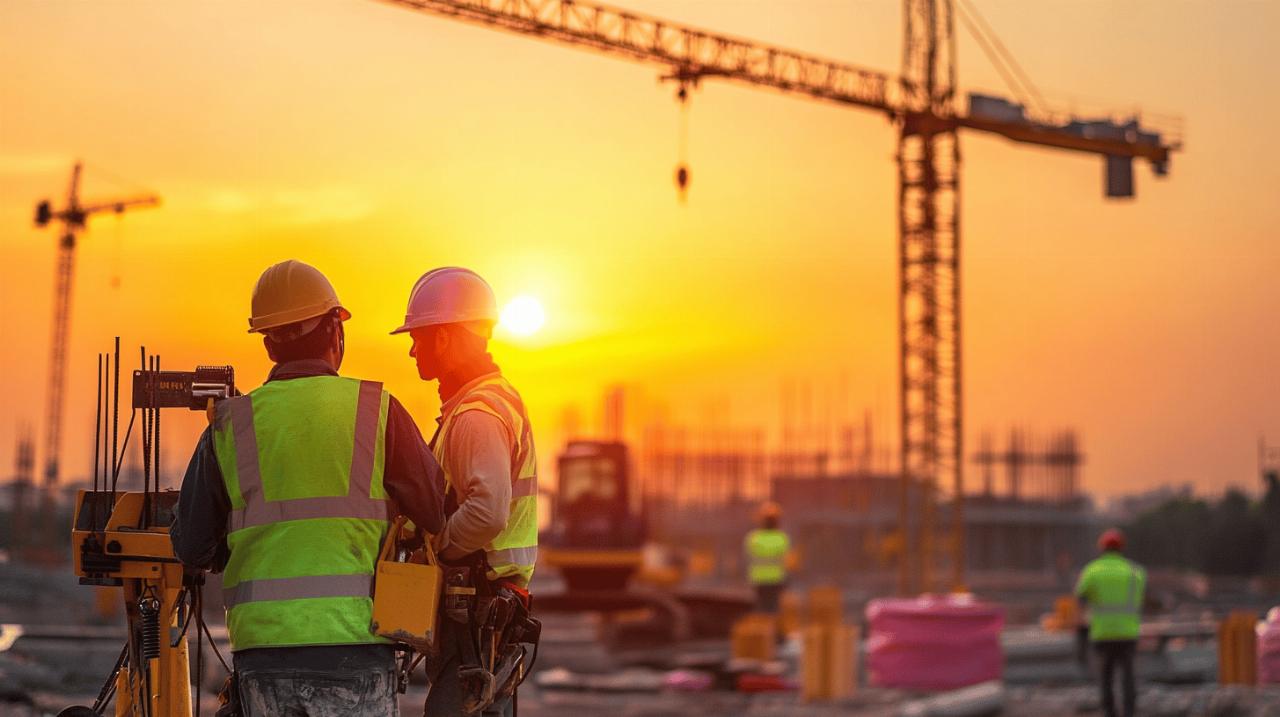Construction sites present a myriad of hazards that can be significantly mitigated with proper lighting and safety equipment. The right gear not only ensures compliance with regulations but also enhances worker productivity and prevents potentially life-threatening accidents. According to industry experts, including Scuola Edile Rimini, construction site safety depends on a comprehensive approach to protective equipment and adequate illumination, working hand in hand to create a secure environment.
Selecting durable lighting solutions
When choosing lighting for construction sites, durability must be your primary consideration. Construction environments expose equipment to harsh conditions including dust, moisture, and physical impacts. Investing in weather-resistant fixtures with high IP (Ingress Protection) ratings ensures your lighting can withstand outdoor conditions and continue functioning reliably throughout your project timeline.
Weather-resistant fixtures for outdoor worksites
For exterior construction areas, select lighting with an IP rating of at least IP65, which provides complete protection against dust and water jets from any direction. LED floodlights are particularly effective for outdoor use, offering energy savings of up to 80% compared to traditional incandescent options while providing consistent illumination even in adverse weather conditions.
Impact-resistant options for harsh environments
Construction sites often involve moving equipment, falling debris, and accidental impacts. Lighting fixtures with reinforced casings and shatter-resistant lenses provide necessary protection against these hazards. Tripod worklights with protective cages offer versatility and protection, though they should be positioned carefully to maintain stability on uneven surfaces.
Ensuring optimal illumination levels
The Health and Safety Executive sets clear standards for construction site lighting in the UK. General work areas require a minimum illuminance of 20 lux, while tasks demanding precision necessitate at least 100 lux. These requirements are not arbitrary but based on substantial research showing that proper illumination significantly reduces accident rates and improves work quality.
Task-specific lighting requirements
Different construction activities demand varying levels of illumination. For concrete work, a minimum of 50 lux is recommended, while carpentry, bricklaying, and plastering require at least 100 lux. Decorative work and site offices should maintain approximately 200 lux to support detailed tasks. Using 4000K cool white lights for task lighting provides excellent visibility and colour discrimination, crucial for detail-oriented work.
Pathway and access point illumination
Circulation areas, including walkways, staircases, and emergency exits, must be consistently illuminated to prevent trips and falls. Festoon lighting works well for escape routes and low-level pathway illumination, creating continuous light without dark spots. For maximum safety, emergency lighting systems should function independently for at least three hours during power failures, guiding workers to exits during critical situations.
High-visibility clothing standards
Visibility on construction sites is not solely dependent on environmental lighting but also requires appropriate high-visibility apparel for all personnel. This clothing significantly reduces the risk of vehicle-related accidents and improves worker identification in low-light conditions.
Uk regulatory requirements for hi-vis apparel
British safety regulations mandate high-visibility clothing on construction sites, particularly where workers interact with vehicles or operate in low-light environments. Compliant garments must meet the EN ISO 20471 standard, which specifies minimum areas of reflective and fluorescent materials based on risk levels. Class 3 garments provide the highest visibility and are essential for workers in high-risk environments or during night work.
Selecting the Right Colour and Reflectivity
The effectiveness of high-visibility clothing depends on colour contrast against the background environment. Fluorescent yellow and orange-red are most commonly used due to their exceptional visibility in daylight and twilight conditions. Reflective strips must be strategically placed around the torso, arms, and legs to ensure 360-degree visibility, particularly when workers are illuminated by vehicle headlights or construction floodlights.
Head protection essentials
Head injuries represent some of the most severe construction site accidents, making proper cranial protection non-negotiable for all site personnel regardless of their specific role or the perceived risk level of their tasks.
Proper Fitting and Adjustment of Hard Hats
A hard hat that fits incorrectly offers significantly reduced protection. The suspension system inside the helmet should be adjusted to maintain a gap of approximately 25-50mm between the shell and the wearer’s head, creating a crucial buffer zone that absorbs impact energy. The chinstrap must be secured without being overly tight, ensuring the helmet remains in place during movement without causing discomfort.
British standards for construction helmets
All construction helmets used in the UK must comply with BS EN 397, which tests for impact resistance, penetration protection, and flame resistance. For specialised work, additional standards may apply, such as BS EN 12492 for working at heights. Helmets should be replaced immediately if they sustain any impact, show signs of material degradation, or reach the expiration date set by the manufacturer, typically three to five years from production.
Eye protection guidelines
Construction environments present numerous hazards to the eyes, including airborne particles, chemical splashes, intense light, and flying debris. Appropriate eye protection must be selected based on the specific risks present in each work area.
Selecting safety glasses for different hazards
Safety glasses must comply with BS EN 166 standards and should be selected based on the specific risks present. For dust protection, wraparound styles with sealed edges prevent particles from entering around the frames. When working with chemicals, glasses with side shields or goggles creating a complete seal around the eyes are essential. For tasks involving potential impact, polycarbonate lenses offering both UV protection and impact resistance are recommended.
Face shields for extreme conditions
When face shields are necessary for activities such as grinding, cutting, or working with hazardous chemicals, they should be used in conjunction with safety glasses rather than as a standalone protection. Full-face shields provide coverage for the entire face, protecting against splashes, sparks, and larger debris while also reducing the risk of inhaling airborne particles.

Hand protection solutions
Hands are among the most frequently injured body parts on construction sites, making appropriate gloves essential protective equipment. The variety of tasks performed requires different types of hand protection to balance safety with the dexterity needed for precise work.
Material-specific gloves for various tasks
Cut-resistant gloves made with Kevlar or similar materials are essential for handling sharp objects or rough materials. For concrete work, alkaline-resistant gloves prevent chemical burns, while heavy-duty leather gloves provide general protection for carpentry and material handling. When working with electrical components, insulated gloves meeting the appropriate voltage rating must be worn to prevent shock hazards.
Grip enhancement and dexterity considerations
Modern safety gloves incorporate advanced grip technologies such as nitrile or polyurethane coatings that enhance grip in wet conditions without compromising tactile sensitivity. Glove sizing is crucial, as overly large gloves reduce dexterity and can become caught in machinery, while too-tight gloves cause hand fatigue and reduce circulation. Many manufacturers now offer ergonomically designed options with pre-curved fingers that reduce the effort needed to grip tools.
Footwear selection criteria
Construction sites present numerous foot hazards, from falling objects to uneven surfaces and penetration risks. Appropriate safety footwear combines multiple protective elements to address these diverse threats.
Safety toe ratings and protection levels
Safety footwear in the UK must conform to BS EN ISO 20345 standards, with various ratings indicating different protection levels. S3-rated boots offer the highest protection for construction, featuring water-resistant uppers, protective toecaps capable of withstanding 200-joule impacts, and penetration-resistant midsoles that prevent sharp objects from piercing through to the foot.
Anti-slip technologies for different surfaces
Construction sites feature various surface conditions from wet concrete to muddy terrain and oily patches. Modern safety boots incorporate specialised sole patterns and rubber compounds designed for specific environments. Deep lugs provide traction on loose surfaces, while siped soles with small cuts across the surface enhance grip on wet smooth surfaces. Heat-resistant soles are essential when working on recently laid asphalt or near hot equipment.
Equipment maintenance protocols
Even the highest quality safety equipment deteriorates over time, particularly in the harsh conditions present on construction sites. Implementing structured maintenance protocols ensures gear remains effective throughout its intended service life.
Daily inspection checklists
Workers should conduct pre-use inspections of all safety equipment using standardised checklists that verify integrity and functionality. For hard hats, this includes checking for cracks, dents, and suspension system integrity. Lighting equipment inspections should assess cable condition, housing integrity, and proper function at specified brightness levels. High-visibility clothing requires examination for reflective strip degradation, fabric tears, and visibility reduction from dirt or contaminants.
Documenting wear and damage
Maintaining detailed records of equipment condition helps identify patterns of wear or damage that might indicate improper use or environmental factors requiring mitigation. Documentation should include the date of inspection, specific issues identified, corrective actions taken, and verification that repairs restored the equipment to safe working condition. These records also provide crucial evidence of compliance with regulatory requirements during safety audits.
Replacement and compliance strategies
Safety standards and equipment technologies evolve continually, requiring systematic approaches to maintain compliance and take advantage of improved protection options as they become available.
Establishing equipment lifecycle guidelines
Different safety equipment has varying service life expectations based on materials, usage patterns, and exposure conditions. Hard hats typically require replacement every three to five years regardless of visible condition, as plastics degrade from UV exposure. LED lighting may have operational lifespans of 15,000-40,000 hours compared to 1,000-2,000 hours for halogen alternatives, significantly affecting replacement scheduling and long-term cost calculations.
Keeping pace with evolving safety standards
Safety managers must stay informed about changes to regulations and standards affecting construction site equipment. Membership in industry associations, regular review of HSE updates, and consultation with safety equipment suppliers can help identify emerging requirements. Implementation plans should include phase-in periods for new equipment, allowing budgeting for replacements while ensuring continuous protection during transitions.
Training workers on safety equipment
The effectiveness of safety equipment depends significantly on proper use. Comprehensive training ensures workers understand not just how to wear or operate protective gear but also why specific protections are necessary for their tasks.
Hands-on demonstrations and practice sessions
Theoretical knowledge alone is insufficient for proper safety equipment use. Practical demonstrations followed by supervised practice allow workers to develop muscle memory for proper donning, adjustment, and use of protective gear. For complex equipment like fall protection systems or specialized lighting, repeated practice under varying conditions ensures competence when actual hazards arise.
Creating a Culture of Safety Awareness
Beyond formal training, developing a workplace culture that values safety encourages consistent equipment use and peer reinforcement of safe practices. Regular toolbox talks focusing on specific protective gear, recognition programs for safety champions, and involving workers in equipment selection processes all contribute to increased buy-in and compliance. When workers understand that safety equipment represents an investment in their wellbeing rather than a procedural burden, voluntary compliance increases significantly.

